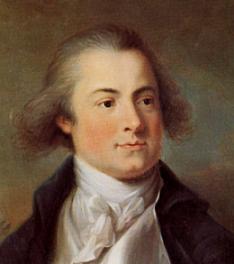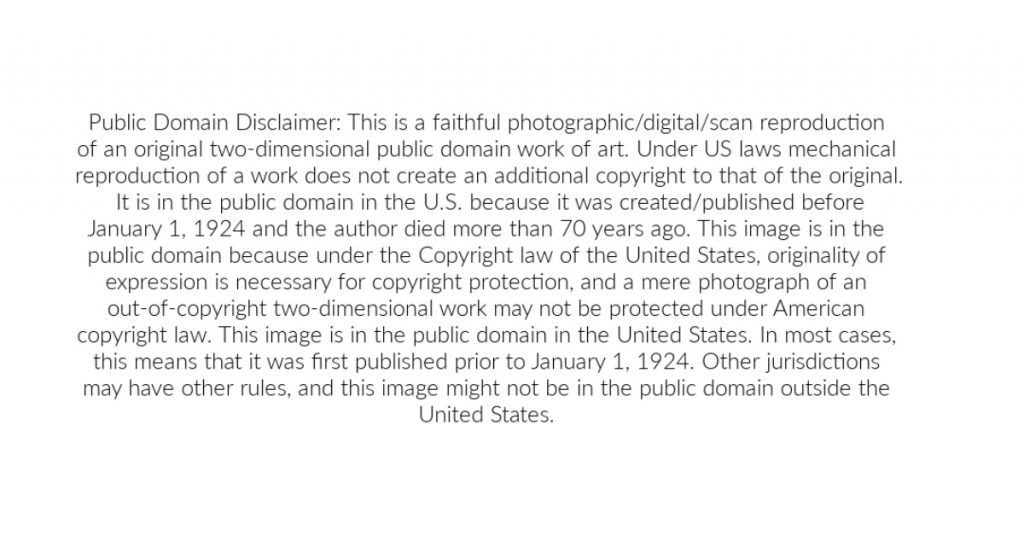
FEATURE image: Ludwig van Beethoven, 1804/05, Joseph Willibrord Mähler (German, 1778-1860), Wien (Vienna) Museum.

Beethoven as a young man, c. 1800. Nineteenth century painting after an engraving by Karl Traugott Riedel (1769–c.1832).
December 16 is the birthday of Classical-Romantic German composer Ludwig van Beethoven (1770-1827).
Throughout the 1790’s young Beethoven composed in the drawing-room tradition.
In 1800, around his 30th birthday, Beethoven was telling friends that he was determined to “open a new path” for music.
Resistance to the young, gruff composer and his new music’s coarse vibrancy—a “music of man” that expressed every aspect of human living with its intrinsic engagement in the world—frequently came from the established style galant musicians. For the previous 50 years they were used to playing the shiny, cool classical music of the Bachs, Mozart, and Haydn. Haydn, though an old man in 1800, was still living and leading the old-school classical tradition as the 30-year-old Beethoven was working his musical revolution.
When Beethoven’s new music was first written and performed it was characterized as “furious.” It was mainly the new century’s young people who had a taste for the revolutionary sound.
What was the level of defiance in Beethoven’s “new” music? The answer varies based in part on the point in time when it was first heard.
Beethoven’s work is famously divided into three epochs: his own twenties (before 1800); his thirties to mid-forties (the so-called Middle Period of around 1805 to 1818); and the final decade to his death.
Towards the end of Beethoven’s career (he died at 56 years old in 1827), his same earlier new music had become the object for critical nuance. Profound changes in society and culture directly affected his art over the next 20 to 25 years leading to the creation of his greatest music. His mature musical works changed the perception of his first “new” music after 1800. With the development of Beethoven’s music an interesting critical question arises—in what manner and to what degree is Beethoven’s earlier music a more tempered musical revolution than his young auditors first recognized?
Early Middle Period works like the Fourth Symphony which had been first received with gusto became for later auditors a source for “astounding confusion.” What had been clearly “revolutionary” at the start of the nineteenth century showed itself by the middle of the 1820’s and after Beethoven’s death to be more of a steady bridge between the classical and romantic worlds and especially more than first supposed.
One fine example of Beethoven’s critically contentious early “new” music is the Fourth Symphony in B Flat Major written in 1806. The first movement Adagio – Allegro vivace is performed by the Royal Concertgebouw Orchestra led by Carlos Kleiber.

Portrait of Beethoven, 1800/01. Engraving by Karl Traugott Riedel after an engraving by Johann Joseph Neidl (1776-1832), based on a drawing by Gandolph Stainhauser von Treuberg from 1801, Leipzig, 1801. (see https://www.beethoven.de/en/media/view/5005287131971584/Ludwig+van+Beethoven+-+Stich+von+Karl+Traugott+Riedel+nach+einem+Stich+von+Johann+Joseph+Neidl%2C+der+nach+der+Zeichnung+von+Gandolph+Stainhauser+von+Treuberg+von+1801+entstand%2C+Leipzig%2C+1801?fromArchive=6007892788379648).
Beethoven’s Sonata No. 5 for Piano and Violin in F major, Opus 24, Frühlings-Sonate (Spring), is in 4 movements and dedicated to Count Moritz von Fries, the son of one of the richest men in the Austrian Empire. In 1800 the 23-year-old Count had married Maria Theresia zu Hohenlohe-Waldenburg-Schillingsfürst. Written in 1800, the first movement, Allegro, begins the piece’s delicious melodic evolution. These melodies recur throughout the work down to the final page and its many designs were used by Beethoven later for parts of other works.
Since about 1800 Beethoven was a frequent guest in the Count’s house and dedicated various works to him, for example the two sonatas for piano and violin op. 23 and op. 24 as well as the string quartet op. 29 and his Seventh Symphony in 1811-1812. Between 1809 and 1810 the bank supported Beethoven in certain of his international business dealings regarding musical commissions.

Count Moritz Christian von Fries with his wife Maria Theresia Josepha, Princess Hohenlohe-Waldenburg-Schillingsfürst (1779-1819), and their son Moritz, c. 1805, by prominent French painter François Gérard.
Count Moritz Christian von Fries (1777-1826) led an affluent life. With the inheritance of his brother Count Joseph von Fries’s art collection and business in 1788, the Viennese banker was well on his way to becoming a great collector of prints and drawings. His curator was F. Rechberger, whose signature is found on the verso of many of Fries’ prints mounted on a yellowish paper. In 1825, he married his second wife, Fanny Münzenberg (1795-1869).
The firm fell into difficulties after 1815 and, declining further in the early 1820’s, the Count was forced to sell piecemeal his collections. A huge lot of prints and books went up for sale in 1824 in Amsterdam while the rest of it was sold after Fries’ premature death. In 1826 the bank in Vienna filed for bankruptcy. Moritz Christian von Fries and his wife Fanny then moved to Paris where the once extravagantly wealthy Count died only a couple of months later. He was 49 years old.
The violin sonata called the Spring, along with other of Beethoven’s works at the turn of the nineteenth century—notably the Violin Sonata No. 4, Opus 23 for which Beethoven intended to pair the pieces—retain a character of the salon, the theatre. Yet they are increasing free and happy in the play of musical faculties. The violin sonatas appeared in 1800/01 which is a year of tremendous growth for Beethoven and of which the 30-year-old composer was well aware.

Beethoven, 1802/3, engraving by Johann Joseph Neidl.

In 1800 Beethoven was also busy writing his Sonata for Piano & French Horn in F major, Opus 17 for Baroness Josephine von Braun, wife of the future head of the Vienna Opera. It premiered in Vienna on April 18, 1800 with Bohemian (Czech) virtuoso horn player Jan Václav Stich, better known as Giovanni Punto (1746-1803), as the soloist and accompanied on the piano by Beethoven himself who, at 29 years old, was highly productive but unknown outside Vienna. When Beethoven and Punto performed this piece in Budapest, a local critic argued in the press: “Punto, yes, of course, is well known. But who is this Beethoven?”
Beethoven, Sonata for Piano & French Horn in F major, Opus 17, composed in 1800 for Baroness Josephine von Braun.

In 1800 Beethoven completed the six string quartets, Opus 18, for Bohemian Prince Ferdinand Lobkowitz (1772-1816).
Beethoven, Opus 18, String Quartet No.4, first movement is part of six string quartets composed in 1800 for Prince Ferdinand Lobkowitz (1772-1816).

Completed in 1801, Beethoven dedicated his Piano Sonata No. 14 in C sharp minor, Sonata quasi una Fantasia, or, named by Ludwig Rellstab, Mondschein-Sonate (Moonlight Sonata) to one of his piano students: 18-year-old Austrian Countess Giulietta (Julie) Guicciardi. This miniature found in Beethoven’s personal belongings after his death in 1827 may be her.
Beethoven, Piano Sonata No. 14 in C sharp minor, “Moonlight,” first movement. Completed in 1801, the 31-year-old Beethoven dedicated it to one of his piano students, 18-year-old Giulietta (Julie) Guicciardi.
In this turn-of-the-nineteenth-century period, the piano sonatas 12, 13, and 15 Beethoven wrote for, respectively, Prince Karl Lichnowsky at the Imperial Austrian court; Landgravine Josepha of Fürstenberg-Weitra, her Serene Highness, the Princess of Liechtenstein; and Austro-German lawyer-writer Joseph Sonnenfels.

In 1800-1801, Beethoven wrote Piano Sonata No. 12
in A flat major, Opus 26, for Prince Karl von Lichnowsky (1761-1814). Way back in 1792 Beethoven wrote his first opus, Piano Trio No. 1 in E flat major for the same prince.
It was at the time of Piano Sonata no. 12, that Beethoven had completed his Symphony No. 1 in C major, Opus 21, dedicated to Baron Gottfried van Swieten (1833-1803), a Dutch-born Austrian diplomat.
Beethoven, Piano Sonata No. 12 in A flat major, Opus 26, completed in 1801 for Prince Karl von Lichnowsky (1761-1814).

Baron Gottfried van Swieten served as the court library’s director prefect from 1777 to 1803. During his tenure, around 300 manuscripts, 3,000 printed works, and 5,000 diplomata came into the court library’s possession as a result of the dissolution of monasteries under Joseph II, Holy Roman Emperor (1741-1790). Gottfried van Swieten is also remembered for the organizational development of the court library and libraries wordwide. He oversaw the compilation of the first library card catalog. (see–https://www.onb.ac.at/en/about-us/650th-anniversary/timeline/1780-the-oldest-card-catalogue)
Beethoven, Symphony No. 1 in C major, Opus 21, dedicated to Baron Gottfried van Swieten (1833-1803), a Dutch-born Austrian diplomat.

For Landgravine Josepha of Fürstenberg-Weitra (1776-1848), Serene Highness, the Princess of Liechtenstein, Beethoven wrote Piano Sonata No. 13 in E flat major: “Sonata quasi una
Fantasia,” Opus 27, in 1801.
Beethoven, Piano Sonata No. 13 in E flat major, Opus 27, was written in 1801 for the Princess of Liechtenstein.

Austro-German lawyer-writer Joseph von Sonnenfels (1732-1817) had the Piano Sonata No. 15 in D major: “Pastorale,” Opus 28 written for him by Beethoven in 1801. The patron’s depiction is by artist Franz Messmer and engraved by Johann Alexander Gottfried Jacobé. (see —http://www.virtuelles-kupferstichkabinett.de/de/detail-view)
Written by Beethoven for Joseph von Sonnenfels (1732-1817) in1801, Piano Sonata No. 15 in D major. “Pastorale,” Opus 28, includes 4 movements.

Portrait of Grand Duke Alexander Pavlovich, 1800, by Vladimir Borovikovsky. The 23-year-old Alexander became Emperor of Russia when his father was assassinated on March 23, 1801. Beethoven wrote Sonata for Piano and Violin no. 6, no. 7. and no. 8, Opus 30 for the new czar in 1801-02.
Beethoven, Sonata for Piano and Violin no. 6, no. 7. and no. 8, Opus 30, 1802, was written for the new czar of Russia.
Beethoven was also writing another symphony, his second, in D major—along with its derivative piano trio in D Major—for Prince Karl Lichnowsky. His compositional work in this period also included writing songs, concertos and bagatelles for various other enthusiastic patrons of the arts. In those first years of the 1800’s, contemporaries described Beethoven, just turned 30 years old in mid-December 1800, as a small and inconspicuous person with an ugly face riddled with pockmarks. Carl Czerny, then a Beethoven student, compared Beethoven to Robinson Crusoe, Daniel Defoe’s fictitious castaway. Beethoven, who proved a lifelong bachelor by choice so to dedicate himself to his music more fully, had an unruly mess of pitch-black hair and an overall neglectful personal appearance so much so that the great composer walking down the public street was sometimes mistaken for a vagrant. Yet in these first years of the nineteenth century, namely, in 1800, 1801, and 1802, Beethoven was literally working around the clock on his music for wealthy and powerful patrons and others and planning for greater accomplishments in the years ahead.
Beethoven, Symphony No. 2 in D major, Opus 36, was written for Prince Karl Lichnowsky in 1801-1802.
SOURCES:
Romain Rolland, Beethoven the Creator, Garden City Publishing, Garden City, NY, 1937.
Peter Watson, The German Genius: Europe’s Third Renaissance, the Second Scientific Revolution, and the Twentieth Century, HarperCollins, 2010.
https://www.britishmuseum.org/collection/term/BIOG27972





